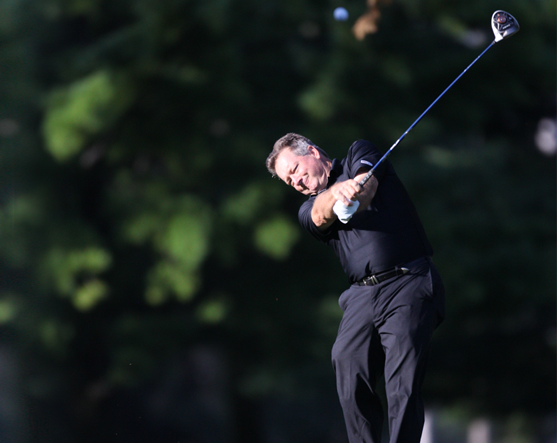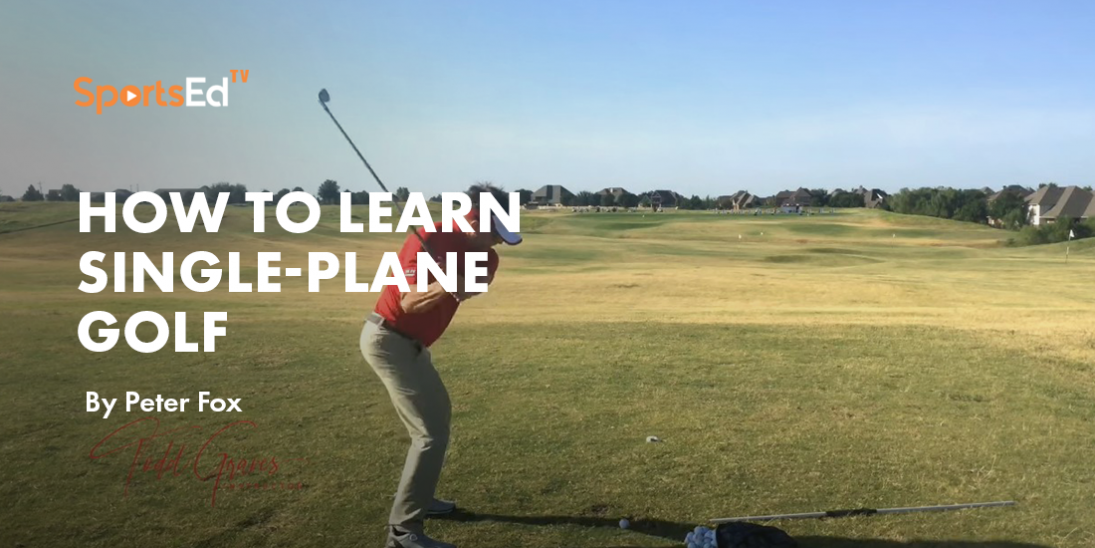Golf
Welcome and thanks for visiting...

Breaking 100 by Tom Sutter
If you are going to break 100 strokes for a round of golf, there are things that you cannot do! These are barriers that will stop you from shooting in the 90's or even lower. You want to be cognitive of these tendencies, and "Don't Even Think About Doing Them".
The First is overdoing the idea of "Keeping your head down"!
The Second is making too long a swing with your short irons.
The Third is hitting short shots with your weight on the back foot.
The Fourth is to not have your hand farthest from the target rotated towards the target in a "weak" or slice position.
The First barrier is keeping your head down too long after you strike the ball. Your eyes should be on the ball at impact and then the momentum of the swing should easily rotate your head and eyes, so you gradually look at target. If your playing partners tell you to keep your head "down" and they will watch the ball ... you are in big trouble!
If your head is stuck in the "down" position, one key swing element blocked is a good weight shift. It is fundamental that you must strike the ball with your weight on the forward foot, the foot closest to the target. On the downswing this requires footwork, and that footwork drives your weight to your leading side.
A relaxed head position allows your neck and shoulders to be relaxed allowing you to have a fluid motion through the hitting area. There is a saying "Your toes go where your nose goes”.
If you keep your nose at the ball, your head stays down too long, and you cannot move your weight easily with good foot work .You want to finish like a pro, up on your right toe, hips turned towards target, and eyes to target as well.
The Second barrier is too long a swing with your short irons (7, 8, 9, PW, SW) ... past parallel to the ground. When you take your backswing the club should point back to the target at the top. The club should not go past parallel and the toe of the blade should point down to the ground.
"Let me count the ways" that a long swing leads to disaster ... It leads to too much wrist break and an inability to feel a square clubface. It makes it very difficult to keep your head in a centered area, and to have an effective weight shift.
Almost no one that I have taught hits 1/2 or 3/4 shots well with too long of a backswing. It is extremely difficult to hit the ball with the right trajectory ... often these overly long swingers launch the ball much too high, sacrificing distance, and control in windy conditions.
Don't try to fight this gauntlet of issues by over swinging your short clubs! Longer clubs may allow longer swings with timing for power but if you over swing the short, accuracy approach irons you won't break 100!
The Third element of a golf game that leads to failure in improvement is weight on the back foot when striking pitch shots. I recommend beginning the half shot or pitch with your weight on your forward foot , and then moving your weight slightly more to that front foot as you make the hit and forward stroke . Do not try to scoop the ball, shove the ball to the target, or lift the ball. You should feel a slight tap down on the ball, weight going on to the front foot, and striking a descending blow on the ball. The solid or square hit alone on the ball gets it up in the air. When you finish, "hold" the finish for a second or two, with your weight on that forward foot. The weight on the front foot should allow your chest to be facing the ball at impact, and not up and towards the sky. Remember ... you strike the ball first and then take the divot. If your weight is on the back foot it is almost impossible to hit these short shots correctly!

The Fourth, or last barrier to being successful in achieving your scoring goals lies with the grip. A right hand (for right handers) overly rotated towards the left or front side can create problems. This kind of right hand grip shows the knuckle of the forefinger, and the right palm faces downward.
The "V" created by the thumb and forefinger should point somewhere between the right ear and shoulder (again for right handers). This "weak" or slice grip creates an open clubface in the top of swing position which causes shots to the right, slices, and shanks. The player will find that the ball contact is weak, and sometimes we say these shots have the flight of a "wounded duck”. This opened face "slice" does not affect all players, but the 10% it does, ensures unsuccessful play. A good grip is the cornerstone of a good golf game, and other slight imperfections may allow you limited success, but your grip must be analyzed carefully to be aligned correctly and to produce a square clubface, and it must always have light but secure pressure.
So don't even think about having these four elements in your game if you want to break 100 and improve even more.
Don't rigidly hold your head down too long. Do allow fluid motion and the head to release with the swing and look at the target at finish.
Don't swing too far back on your short irons. Do point the club to target at the top of the swing in a parallel to ground position, or slightly short of parallel.
Don't hit your partial and short shots with your weight on the back foot. Do keep your weight forward to your front foot, and move the weight even more forward as you are striking the shot.
Lastly, don't use a "weak" grip, meaning the strong rear hand is rotated towards target with the palm facing down. Take the time to employ a good grip, secure and light, in which the palm of the trailing hand faces the target at address, square with the clubface.
Avoid these pitfalls and you will enjoy scores below 100, and even lower!








